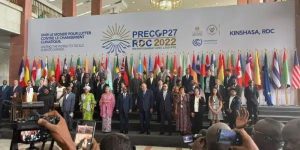President Juan Carlos Villalonga, author of Argentina’s Law 27,424 of renewable energies, and Frente Cambiemos Member of Parliament (MC), analyses the news that Congress is working on to stimulate the production of hydrogen.
Looking at the recent developments about hydrogen around the world, on the renewed interest that is being generated around this technology on a global scale, we see the need for the governments of the region to be attentive and to be able to design development policies around this new agenda.
At GLOBE, we are promoting the creation or updating of regulatory frameworks that encourage and accelerate the insertion of this technology, which is key to ensuring the energy transition. The vigour that the so-called “green hydrogen” has taken on is due to the fact that its costs are falling rapidly, and this is mainly due to the lowering of the costs of renewables.
In Argentina we are initiating a legislative process with the objective of evaluating the updating of the National Hydrogen Law, Law 26.123. This law was approved in 2006 within the framework of the expectations generated at that time by the future development of hydrogen technology as an energy vector. In fact, almost nothing happened with this law. Perhaps there were no great expectations in the law either, since the high costs of hydrogen were keeping it from being a major player in Argentina.
This has changed in recent years, and that is why we want to start a conversation with Congressman Gustavo Menna (UCR-Chubut), who presented a project to update Law 26123, and together with the president of the Energy Commission of that chamber, Congressman Darío Martínez (Frente de Todos – Neuquén), we hope to conclude with a renewed text and, perhaps most importantly, with a renewed interest in the political arena on the hydrogen industry. We hope to be able to promote similar processes in other countries in the region.
Hydrogen is an ideal complement to a renewable energy matrix, since it allows energy to be stored and we can use it in many different ways. Its uses and potential have been known for a long time, and what is happening now, which is generating the extraordinary expectations we see today with hydrogen, is that electricity from renewable sources has dramatically lowered its costs.
The way to produce clean hydrogen or “green hydrogen” is through the electrolysis of water, separating hydrogen and oxygen, using electrical energy from renewable sources, with zero emissions. Most of the hydrogen that is used today for industrial purposes is obtained from fossil fuels, which is why it is called “grey hydrogen”, since in this production of hydrogen there are CO2 emissions.
The use of fuel cells, in which hydrogen is recombined with oxygen to produce electricity, has the full range of possible uses one can imagine for an electrical storage device. The most interesting segments for the use of hydrogen are in industry, heavy machinery and long-distance heavy transport. These are, precisely, some of the most difficult sectors of the economy to decarbonise since they require power and performance that is difficult for batteries. Hydrogen is the technology that allows us to cover the “last mile” in the energy transition, in decarbonising the most complex sectors of transport and industry, for example, steel.
Fuel cells will be key to powering locomotives to replace diesel engines, heavy equipment such as those used by the mining industry, trucks that make journeys
But we must not lose sight of the fact that hydrogen is an important input in industry, beyond its energy use, and this implies that green hydrogen must also be promoted as an input in the chemical and metallurgical industry.
In Argentina we have everything we need to produce hydrogen in quantity and at very competitive costs. The latter is very important because everything seems to indicate that hydrogen will be a commodity from 2030, that is, there will be a global demand and supply. This is why it is important for Argentina to prepare for this new technological frontier that is opening up.
Two things are needed to take advantage of our potential. On the one hand, we must continue with our decarbonisation of the electrical matrix, ensuring that wind and solar energy reduce their costs even further in our country. Argentina still has high costs with respect to other countries in terms of renewable generation and this has to do with the framework context of the economy. This has to be resolved, otherwise we will not have competitive costs at the level that our natural resources would allow.
The second is to create the conditions for the local R&D sector, as well as the private sector, to start gaining momentum in this area. It can already be seen that we have a very interesting movement in this area with an actor that can be a determining factor as it is Y-Tec, YPF’s technological company. It is also worth mentioning as steps taken in this field initiatives such as the Hychico company, in Comodoro Rivadavia, and even further back, the pioneer project of the Truncated Type, with the work around the Argentine Hydrogen Association. Argentina has the human and natural resources to be a relevant actor in the global Hydrogen market.
For a long time, it was estimated that hydrogen would be the technology that would allow closing the cycle in the energy transition from 2040 onwards. Let’s hope that this is the case, it would be very good to ensure that we can reduce emissions more quickly.
Then, renewables should be the big suppliers of electricity in an energy matrix that is becoming more and more electrified, but renewables should also be the generators of electricity to produce hydrogen on a scale to feed transport, to use it in backup equipment for electrical networks, as an industrial input and for chemical products such as fertilizers.
Everything indicates that green hydrogen will be an exportable input, which represents a leap in scale in terms of the demand for renewable energy within the local market as in the region. Argentina has great opportunities and great natural conditions. We have to take advantage of them and for that, this development will define technologies and great players during the next ten years.
I see that hydrogen is now as wind energy was at the beginning of the 90s, at that time its participation was insignificant but the take-off was something predictable and expected. It is time to establish strategic links, provide ourselves with the appropriate regulatory frameworks and above all have continuity in an energy and industrial policy in the coming years with a focus on hydrogen.
I hope we can contribute to some of this with the legislative initiative we are launching, which may lead to what we call a Hydrogen Road Map for Argentina.








